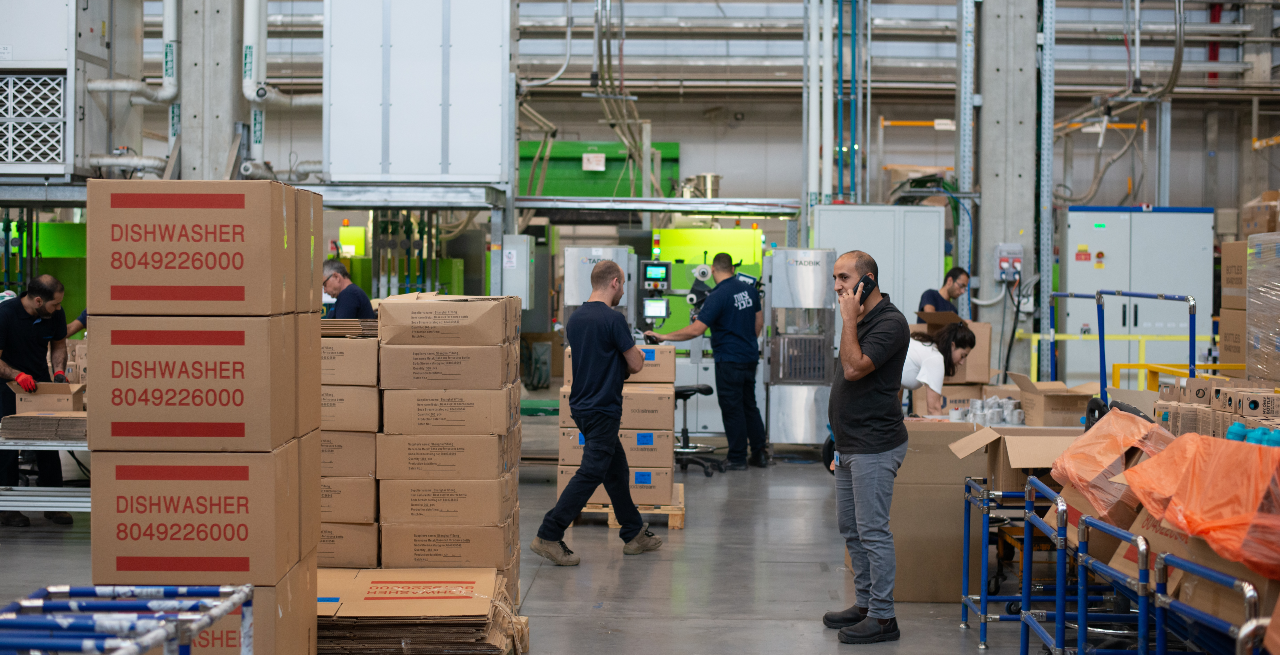Decreasing Food Waste Through Advances in Cold Chain Management
4 Min Read By Carl Wasinger
Globally, one third of the food produced for human consumption is wasted. Not only is this a loss of valuable resources, it’s also an affront to the 815 million people around the world who suffer from malnutrition. So, how can we both solve the food waste issue and ensure better food availability?
Waste can occur anywhere along the food supply chain, which includes production, processing, distribution, and consumption. The food waste equation incorporates all these stages to address and curb waste along each step.
Thankfully, manufacturers are making gains in targeting waste during the distribution stage of the supply chain. Approximately 14 percent of all food is wasted between harvest and distribution, but recent advances in cold-chain management could bring this figure down significantly.
The cold chain is a variation on typical supply chains, but it refers to the movement of perishable goods—food and beverages, chemicals, vaccines, etc.—that need to be refrigerated along each step of the chain. However, current cold chains often are unable to cater to the specific climate requirements of different goods, especially as supply chains become longer and longer.
Yet simply by maintaining a continuous cold chain, and the proper temperature- controlled conditions along each step, distributors could potentially salvage 475 million tons of food annually. This is enough to feed hundreds of millions of people globally, provided that supply chains were amended to ensure that food reached those who need it most.
It’s not enough just to plug cold chain gaps to keep food products from spoiling. Food and beverage products must be better preserved while maintaining their peak nutritional value, taste, and quality, ensuring that everyone has access to fresh, healthful food.
So, let’s take a look at how better cold chain management can assist with the ambitious goal of boosting food access while decreasing waste.
Improving Distribution
Currently, food retailers largely rely on an arsenal of refrigerated distribution centers, docks, and trailers to ship food from one location to another until it can reach a grocery store or consumer’s doorstep.
Yet this method is expensive and not ideal. The temperature, humidity, light, and ventilation requirements of products can vary greatly. It’s therefore difficult to maintain the ideal climatic conditions for tens of thousands of different products spread out in enormous facilities. What’s more, the primary distribution centers are often far from the consumer, which extends the length of the cold chain and further complicates logistics.
So, companies are starting to look at getting food products closer to the consumer and shortening the cold chain. Instead of relying only on centralized large-scale distribution centers, where food needs to be shipped thousands of miles, retailers are investing in smaller cold storage facilities called microfulfillment centers.
Usually smaller than 10,000 square feet, microfulfillment centers make inventory manageable by allowing retailers to have only a small amount on hand at any given time, based on predicted consumer demand. It’s also feasible to build many micro-centers across a region to fill in supply chain gaps without investing in expensive, spacious high-tech facilities.
A recent development, microfulfillment centers are helping to solve the last mile puzzle, which notoriously plagues online retailers. These centers are often built into an existing grocery store, parking lot, or somewhere strategically close to consumers, allowing products to be shipped instantly, often with same-day delivery.
Products deployed from microfulfillment centers can also ship in insulated food storage containers, allowing each product to travel in ideal conditions. Digitized tote-sized containers create the ideal environment for any foodstuffs, whether it’s 0°F for frozen vegetables or 45°F for unripe avocados.
Yet major food retailers are for the most part not using these small, insulated containers because they are relatively infeasible for large inventories. It’s easier for these retailers to load everything onto trailers as is, versus adding another step to the sorting and packaging process.
But if distributors were to handle smaller, more manageable loads, these containers could reduce spoilage during storage at the fulfilment centers and last-mile transport.
Machine Learning
Aside from investing in new distribution centers and better climate-controlled tech, retailers can leveragegroundbreaking advancements in artificial intelligence and machine learning to optimize the supply chain.
AI combined with data analytic tools can now ingest billions of data points, process data streams in real-time, and create workable insights. For instance, machine learning software can forecast models to predict inventory, transport time, consumer demand, and spoilage probability.
The software can also monitor the trailers themselves during transport between distribution centers. Previously, passive temperature sensors—such as battery-powered thermometers—would monitor the conditions of food containers. Now companies can ensure not only that product ships under ideal climate conditions, but also that they are receiving temperature data in real-time.
With Bluetooth low energy (BLE) trackers, personnel can remotely monitor the climate conditions in an insulated transport container second by second. BLE trackers offer real-time monitoring of temperature, humidity, and movement, along with automated data entry and data analytics.
This cold chain thermal analysis allows the AI system to learn in real-time and offer improvements for each subsequent distribution—such as identifying suboptimal environmental conditions for the company to tweak.
Better Food Availability
Unfortunately, reducing food waste doesn’t necessarily translate to improved availability or accessibility for low-income consumers. Less food may spoil, but supply chain gaps might still persist, resulting in food deserts.
Food deserts are areas that have limited access to affordable and nutritious food, often due to a lack of infrastructure. Residents often don’t have the means to travel outside their communities to reach a grocery store where fresh produce and vegetables are available. So, how can perishable food reach those who need it most?
For one, positioning microfulfilment centers in these food deserts could help ensure healthy food products reach low-income communities that are otherwise isolated from industrialized supply chains. Another option is to implement food waste legislation similar to that in France, where grocers are prohibited from throwing away food they could otherwise donate.
In an era of automation and technological advances, we simply don’t have an excuse anymore. It’s possible to preserve more fresh food and make it more widely available.


